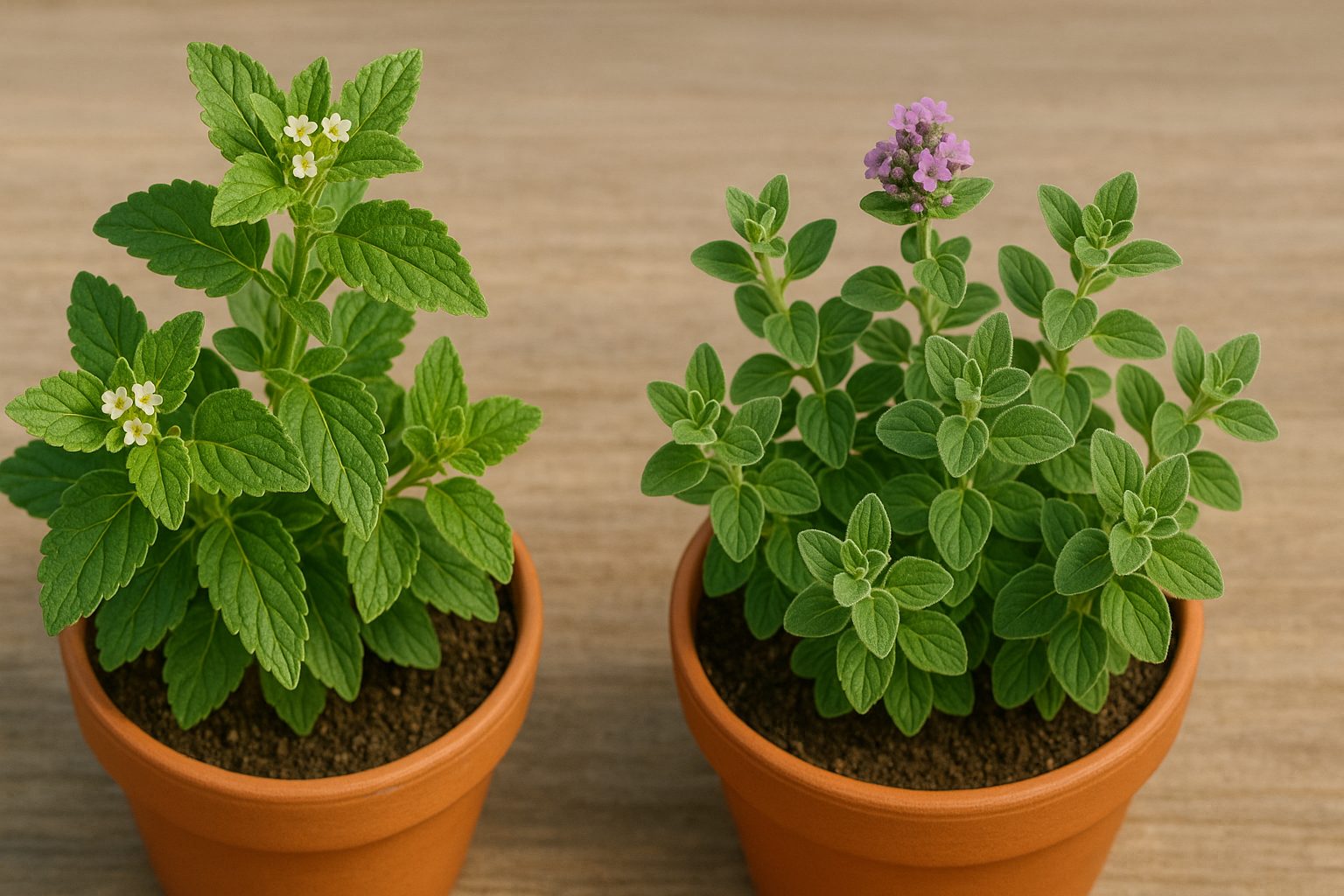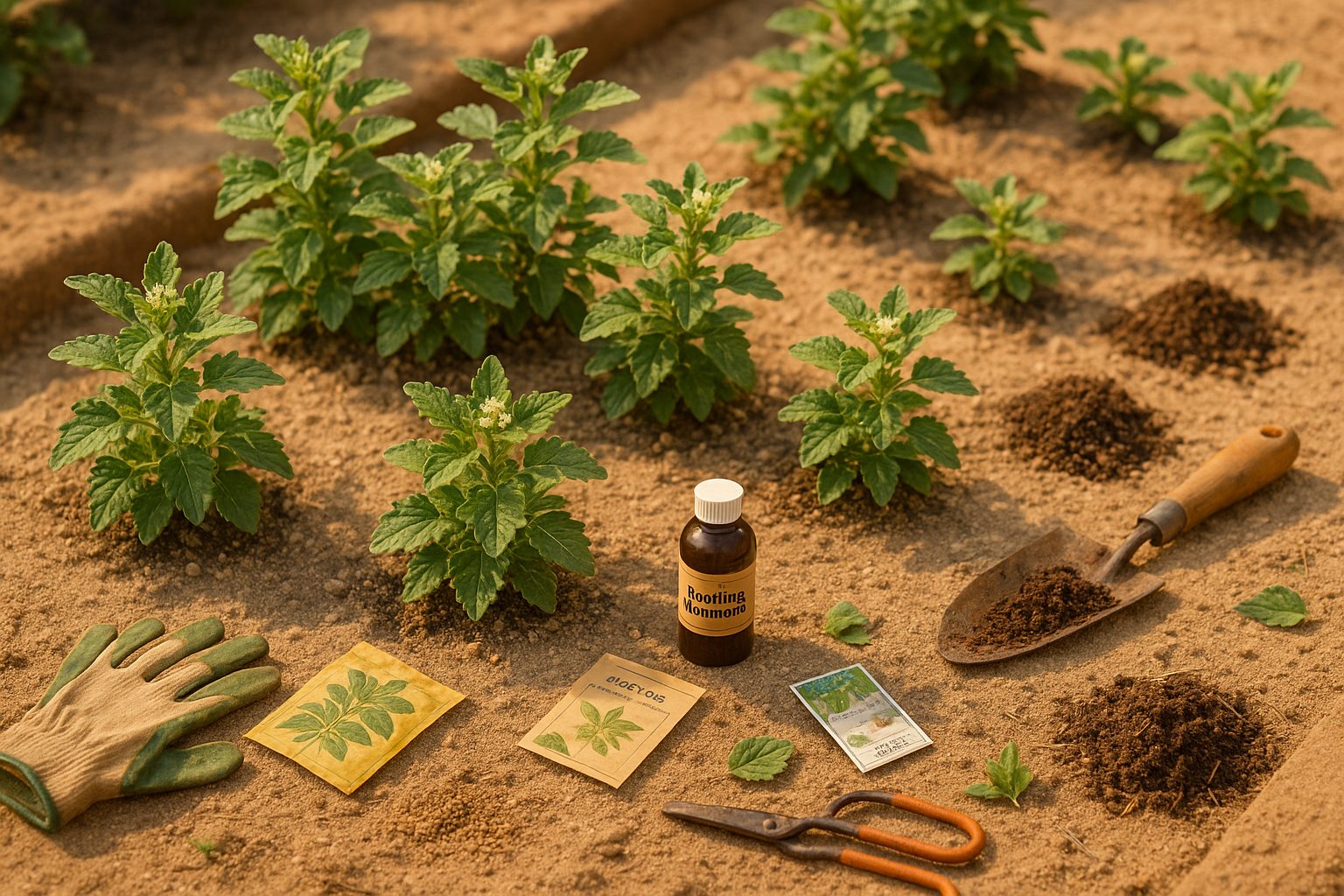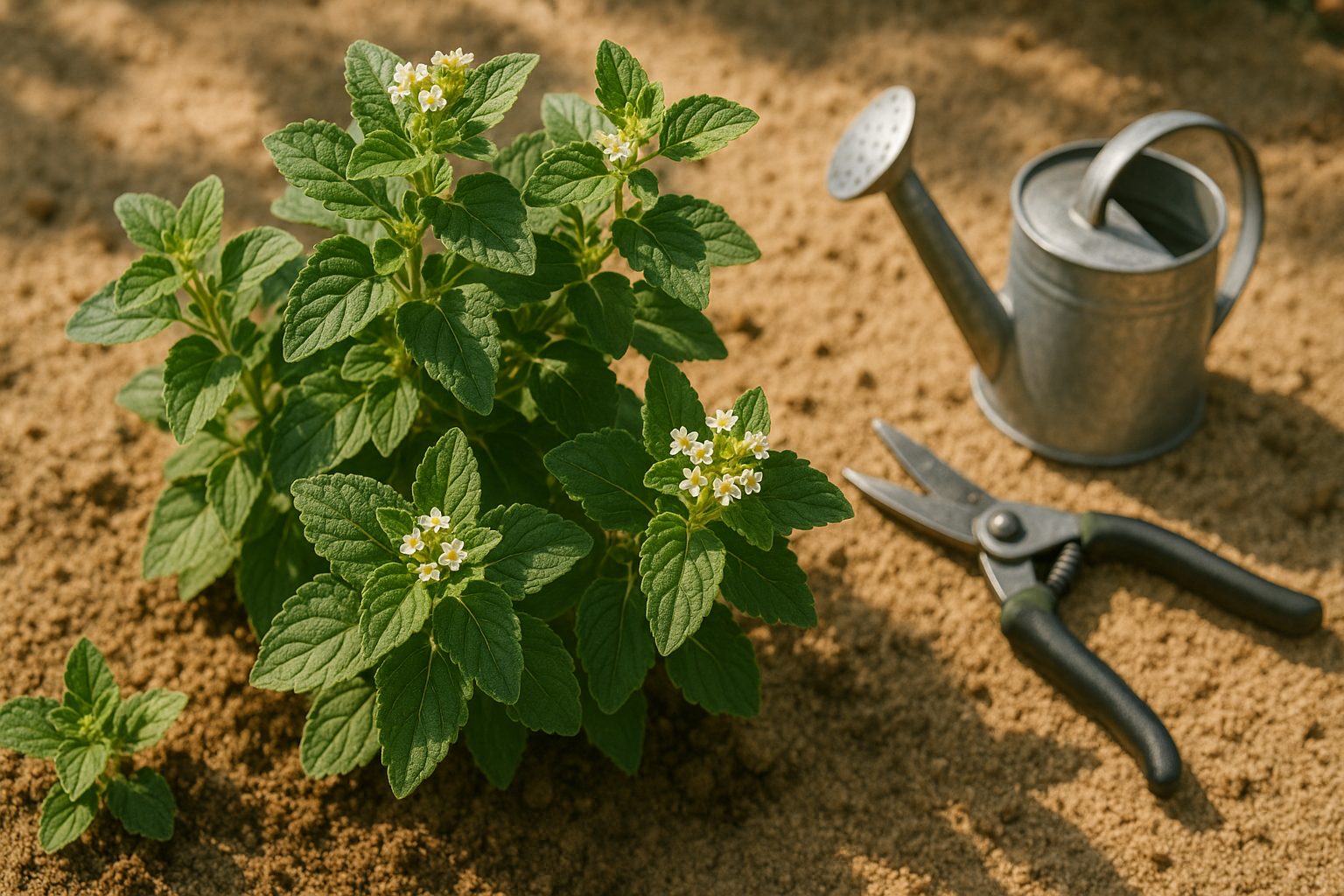Introduction to Mexican Oregano
Is Mexican oregano perennial? This question often comes up among both home gardeners and curious cooks who want to get the most from their herb gardens. Mexican oregano, also known as Lippia graveolens, is a well-loved staple in Latin American kitchens. Its earthy, slightly citrusy notes add depth to salsas, chili, and a wide range of traditional dishes. But beyond its role in recipes, Mexican oregano is making a name for itself in gardens across the southern United States and beyond, prized for both its robust flavor and its tough, sun-loving nature.
It’s important not to confuse Mexican oregano with the more familiar Mediterranean oregano, Origanum vulgare. While they share a similar name and both produce aromatic, flavorful leaves, these herbs come from completely different plant families. Mediterranean oregano is part of the mint family, whereas Mexican oregano belongs to the verbena family. Their flavors are subtly—but importantly—different: Mexican oregano offers a brighter, zestier aroma that stands up to strong flavors like cumin, chili, and citrus, while Mediterranean oregano leans more floral and mild.
The appeal of Mexican oregano goes far beyond the kitchen. Its resilience in hot, dry climates makes it a favorite for xeriscaping—gardening that reduces or eliminates the need for irrigation. It thrives in full sun, produces pretty, pollinator-friendly flowers, and requires little maintenance once established. This means you can not only enjoy homegrown herbs for your favorite recipes but also create an attractive, drought-resistant landscape in your yard. For those seeking year-after-year returns, understanding whether Mexican oregano is perennial can make a big difference in choosing where and how to plant it. In short, this versatile herb is a must-consider for anyone who loves bold flavors, easy gardening, and sustainable landscaping solutions.
How Mexican Oregano Differs from Other Oreganos

Mexican oregano stands out from its Mediterranean cousins in several notable ways, starting with flavor. While Mediterranean oregano, typically Origanum vulgare (in the mint family), is bright, herbaceous, and often described as slightly bitter with a hint of sweetness, Mexican oregano (Lippia graveolens, from the Verbenaceae family) has a more robust profile—it’s earthier, with strong citrus and slight licorice undertones. This citrus note is a big reason why Mexican oregano pairs so wonderfully with spicy Mexican and Latin American dishes, holding its own against bold flavors like cumin, chili, and garlic.
In contrast, the Mediterranean variety shines in more delicately flavored Italian or Greek recipes, complementing tomato sauce, lamb, or olive oil dishes without overwhelming them. Visually, the plants are easy to tell apart if you know what to look for—Mediterranean oregano has soft, oval, slightly fuzzy green leaves and purple or white flowers typical of mint relatives, whereas Mexican oregano sports rougher, jagged-edged leaves and small white or yellow blooms, looking more like its relative, lemon verbena.
Botanical Differences
Botanically, this difference goes even deeper. Despite the shared name and similar aromas when dried, Mediterranean oregano belongs to the Lamiaceae or mint family, along with basil and sage, which gives it that characteristic square stem and spreading growth habit—perfect for herb gardens or even pots on your windowsill. Mexican oregano, on the other hand, is a member of the Verbenaceae family—a group that includes vervain and lemon verbena. This means it’s more shrub-like and woody, better suited for warm, dry climates, and can actually reach up to five feet tall if you let it grow.
These botanical distinctions aren’t just trivia—they affect how and where you can grow each herb. Gardeners in hotter, arid zones might find Mexican oregano thriving where Mediterranean varieties would wilt, while those in cooler, wetter regions will have more success with the classic Mediterranean type.
Practical Implications in Cooking and Gardening
These botanical and flavor differences have practical implications in the kitchen and the garden. Owing to its punchy, citrusy flavor, cooks should be careful substituting one oregano for the other—using Mexican oregano in an Italian dish, for example, might overpower the other flavors and taste out of place, while Mediterranean oregano might taste flat in a rich, peppery mole.
Professional chefs and home cooks aware of these nuances use each variety to play to its strengths:
- Mexican oregano: ideal for salsas, taco fillings, and hearty beans
- Mediterranean oregano: perfect for pizzas, salads, and roasted vegetables
Gardeners, meanwhile, should consider not just their climate but their cooking style—if you love Tex-Mex or Latin meals, giving Mexican oregano a sunny spot in the yard will bring fresh, authentic flavor to your dishes all season long.
Ultimately, while the shared name “oregano” might catch you off guard, knowing what sets Mexican and Mediterranean oreganos apart will help you make the most of both in your kitchen and garden.
Growing Mexican Oregano in Your Garden

Mexican oregano thrives in warm, sunny climates and is best suited for USDA Zones 9 through 11, where winters are mild and frost is rare. To start growing Mexican oregano, choose a spot that receives at least six hours of direct sunlight daily—these plants need plenty of light to develop their signature flavor and aroma.
They prefer well-draining, sandy or loamy soil; heavy clay should be amended with compost or sand to ensure roots aren’t sitting in water.
You can start Mexican oregano from seeds, although it’s much faster to propagate from cuttings. Dip a healthy stem cutting in rooting hormone, plant it in moist potting mix, and keep it in a warm spot until you see new growth. For seeds, sow them just below the surface of moist soil and keep the area consistently damp until seedlings appear.
Consistent watering is key, especially during the first growing season; let the top inch of soil dry between waterings to avoid root rot. Established plants are drought-tolerant and only need supplemental watering during prolonged dry spells.
Fertilize lightly once in the spring with a balanced, organic fertilizer—too much feeding can reduce the plant’s aromatic oils.
Mexican oregano grows well both in-ground and in containers; if space or soil conditions are a concern, containers offer the benefit of better drainage and the option to move plants indoors during a rare cold snap.
Watch out for common pests like spider mites or aphids, which can be managed by spraying the leaves with a gentle soap solution or encouraging ladybugs in your garden. Fungal diseases such as powdery mildew may appear if air circulation is poor, so plant oregano with enough spacing and avoid overhead watering.
By following these straightforward steps, you’ll enjoy a bounty of fresh Mexican oregano that brings authentic flavor to your homemade dishes.
Caring for Mexican Oregano Year-Round
Caring for Mexican oregano throughout the year is easier when you tailor your routine to the seasons. In early spring, prune back old stems to encourage fresh growth and prevent the plant from becoming leggy—always use clean, sharp shears and trim just above a set of healthy leaves. This is also a good time to refresh the mulch layer; a couple of inches of straw or bark keeps weeds at bay and conserves soil moisture as temperatures rise.
During the summer, water regularly but don’t overdo it—Mexican oregano prefers slightly dry conditions and can suffer if its roots stay soggy. For the best flavor, harvest leaves just before the plant blooms, as this is when their oils are most concentrated. Use scissors to snip sprigs in the morning after the dew has dried but before the full sun hits; this helps preserve the rich aroma and encourages bushier regrowth.
As fall approaches, cut back about a third of the growth to keep the plant compact, and consider collecting seeds or cuttings if you want to propagate. In regions with chilly winters (zones 8 and below), protect your plant by applying a thick mulch layer around the base, or dig up smaller plants to overwinter in pots indoors near a sunny window.
To start new plants, either take 4-inch softwood cuttings in late spring—remove lower leaves, dip the cut end in rooting hormone, and plant in moist potting soil—or divide mature clumps every few years for a no-fuss approach. With these seasonal strategies, you’ll enjoy plenty of aromatic harvests and keep your Mexican oregano thriving year-round.
Harvesting, Preserving, and Using Mexican Oregano
The key to getting the best flavor from your Mexican oregano is to harvest it just as the plant begins to flower—this is when the leaves are most fragrant and packed with essential oils. Use a pair of clean garden shears or scissors to snip stems in the morning after the dew has dried but before the midday sun. Take only about one-third of the plant at a time to keep it healthy.
Gather the stems in small bundles and hang them upside down in a well-ventilated, dry space away from sunlight. This method helps preserve the aromatic oils that give Mexican oregano its distinctive citrusy, slightly peppery taste. Once the leaves crumble easily between your fingers—usually after one to two weeks—they’re ready for storage.
Strip the dried leaves from the stems and store them in airtight glass jars or resealable bags, keeping them away from heat, light, and moisture. For longer shelf life, consider vacuum-sealing portions or freezing the whole leaves, which can be crushed as needed.
Whenever you’re ready to cook, Mexican oregano elevates a wide range of dishes:
- Sprinkle it into traditional Mexican salsas and moles
- Use it in taco fillings
- Add it to hearty soups like pozole or birria for an herby punch
- Enhance slow-cooked beans, grilled meats, and tomato-based sauces commonly found throughout Latin American cuisine
Try rubbing dried Mexican oregano between your palms before adding it to release its oils, or steep a pinch in hot water for a bright, herbal tea. With just a little care when harvesting and preserving, you can keep the vibrant taste of Mexican oregano front and center in your kitchen all year long.
Health Benefits and Traditional Uses
Mexican oregano offers a wealth of nutritional and health benefits that make it a standout among culinary herbs. Rich in antioxidants like thymol, carvacrol, and rosmarinic acid, it helps fight free radicals and supports your body’s natural defenses against cell damage. Its robust vitamin and mineral profile—particularly vitamin C, vitamin A, calcium, and iron—makes it a nourishing addition to your diet.
Traditionally, Mexican oregano has long been valued in Mexican and Central American folk medicine. Herbalists commonly use it as a remedy for respiratory issues such as coughs, colds, and congestion, often preparing it as a soothing tea or steam inhalation. Its strong antimicrobial properties make it a popular choice for treating minor wounds and skin irritations, typically by applying a diluted oil or infusion directly to the affected area.
Some families rely on it for digestive troubles as well, attributing its carminative effects to easing bloating and upset stomach. There are even cultural practices where Mexican oregano is brewed and sipped to relieve menstrual discomfort or headaches.
As with any potent herb, it’s important to exercise caution if you are prone to allergies, especially to plants in the Lamiaceae family (like mint or sage). Sensitive individuals might experience skin irritation or mild gastrointestinal upset, so consider starting with small amounts if you’re new to using this herb. Always consult with a healthcare professional before trying Mexican oregano as a supplement, particularly for pregnant or breastfeeding women and people on medication for chronic conditions, to avoid potential interactions.
By incorporating Mexican oregano thoughtfully—whether as a flavor booster in your meals or as a gentle home remedy—you can enjoy both its unique taste and time-honored health benefits.
Creative Ideas to Spice Up Your Cooking with Mexican Oregano
Mexican oregano is an easy way to add bold, aromatic flavor to your dishes, and experimenting with it can quickly liven up your weekly menu. Unlike its Mediterranean cousin, which has a softer, slightly sweet and minty profile, Mexican oregano is punchier with notes of citrus and licorice—making it perfect for robust, earthy cuisines.
Try tossing a teaspoon into your next batch of homemade chili or enchilada sauce; it works beautifully with tomatoes and chili peppers, enhancing their depth and complexity. If you’re preparing meats, Mexican oregano shines as a dry rub mixed with cumin, garlic powder, and smoked paprika for pork, beef, or chicken—just sprinkle it on before roasting or grilling for an authentic Mexican flair.
For vegetarians, stir a pinch into black beans or lentil soup, or mix it into sautéed mushrooms and peppers for tacos and burritos. To get the most out of Mexican oregano, crush it between your fingers before adding it to any recipe—this releases more of its essential oils and vibrant aroma.
Feel adventurous and blend it into homemade dressings or sprinkle over avocado toast for a new twist on simple staples. Even pizza can get a south-of-the-border upgrade: replace your usual oregano with Mexican oregano and top with fresh jalapeños and chorizo.
Keep a small jar ready and experiment by swapping it in whenever a recipe calls for oregano; you’ll be surprised by how much it can brighten both traditional Mexican dishes and everyday meals.
Conclusion & Final Planting Tips
Growing Mexican oregano isn’t just about adding a new herb to your garden—it’s about bringing vibrant, authentic flavors into your kitchen and connecting with a rich food tradition. This hardy perennial thrives in warm, well-drained soil and loves full sun, making it a low-maintenance addition for both new and experienced gardeners.
When selecting your plants, choose healthy, bushy starts from a nursery or propagate your own with cuttings from a friend. Mexican oregano roots easily and can quickly fill a container or garden bed. Give your plants plenty of breathing room and avoid overwatering; letting the soil dry out between watering helps prevent root rot and keeps your oregano thriving.
As you harvest, pinch or snip leaves regularly to encourage bushier growth and more abundant yields. In the kitchen, experiment with whole leaves or ground oregano in salsas, tacos, grilled meats, and even pizza for a citrusy, peppery kick that regular oregano just can’t match. You might discover that a homemade pozole or roasted veggie dish takes on an entirely new dimension with just a sprinkle of this herb.
The best part is, fresh or dried, your homegrown Mexican oregano will always taste bolder than anything prepackaged. So whether you have a tiny patio pot or a spacious kitchen garden, give Mexican oregano a try—you’ll enjoy a fresh supply of flavor all season long and find new inspiration in your cooking.
Don’t be afraid to experiment and let your palate guide you. Growing your own herbs is rewarding, flavorful, and surprisingly simple; with Mexican oregano, you’re just a few steps away from elevating every meal.
